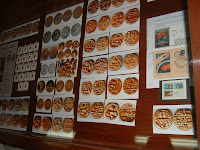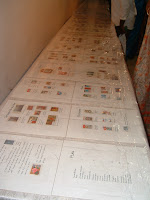Madras Week: History through coins, stamps



At the Russian Centre of Science and Culture, there was also an inauguration of an exhibition on Russian stamps and coins of the Madras Presidency. Doing the honours was Hemachandra Rao, former president of the Madras Coin Society.
It was R Vaidyanadhan's collection on display that I was drawn to. Vaidyanadhan has just taken over as president of the Madras Coin Society; he is assistant editor in the sports section of The Hindu. He also edits Indian Coin News, an eight-page monthly produced by the Madras Coin Society. In its August issue, there is interesting material on the Madras-Vijayanagara connection, and most of the pictures of the coins displayed related to the Vijayanagara period.
Briefly, the history of Madras’s coinage is more than 2,500 years old. Other than the ancient coins of the Pallava, Pandya, Chera and Chola empires, the Vijayanagara influence was prominent on south Indian coins. In 1361, Kumara Kampana II, son of Vijayanagara emperor Bukka Raya I, established the Vijayanagara rule in Tondaimandalam. The Vijayanagara rulers installed viceroys to rule various parts of the empire. In 1535, for instance, Achyuta Deva Raya, the brother and successor of Krishna Deva Raya, granted Devappa Nayak, the governor of Thanjavur, permission to establish a feudatory kingdom. King Viswanatha Nayak, the viceroy to Madurai, was the founder of the Nayak dynasty there.
Damarla Venkatadri Nayakudu, an influential chieftain under the Vijayanagara king, Peda Venkata Rayalu, based in Chandragiri, was in charge of the area where Madras took root. He granted a piece of land lying between the river Cooum, almost at the point it enters the sea, and another river known as the Egmore river, to the English in 1639. The grant empowered the English to administer justice and to acquire additional land and produce coinage. It was in honour of Damarla Chennappa Nayakudu, father of Venkatadri, that the settlement around Fort St George was named Chennapattanam.
Most of the Vijayanagara coins issued for circulation in south India were made of gold or copper. The coins show Shiva and Parvati, Lakshmi and Naryana, Venkateswara, Sita and rama, Balakrishna and Narasimha.
Pictures show two views of the coins of the early Madras period and Russian stamps on display.
Comments